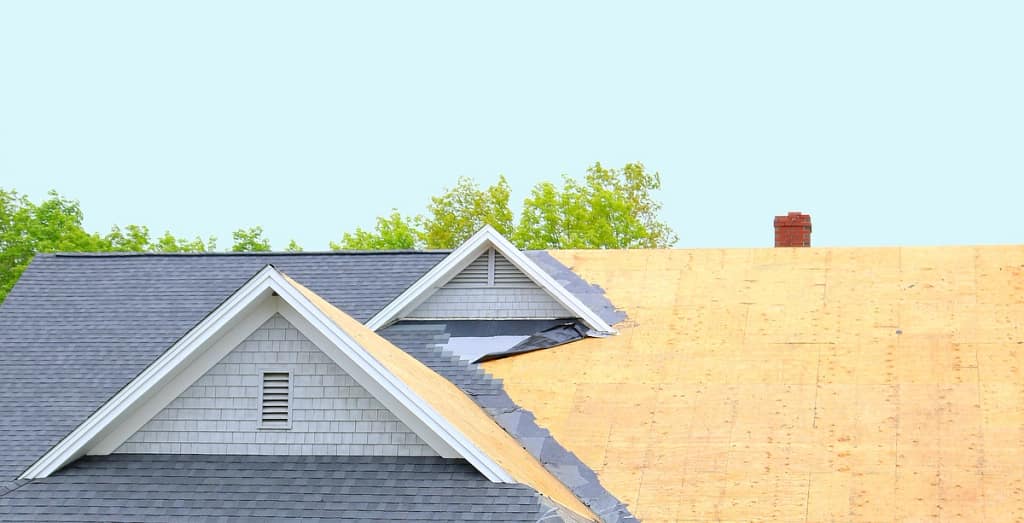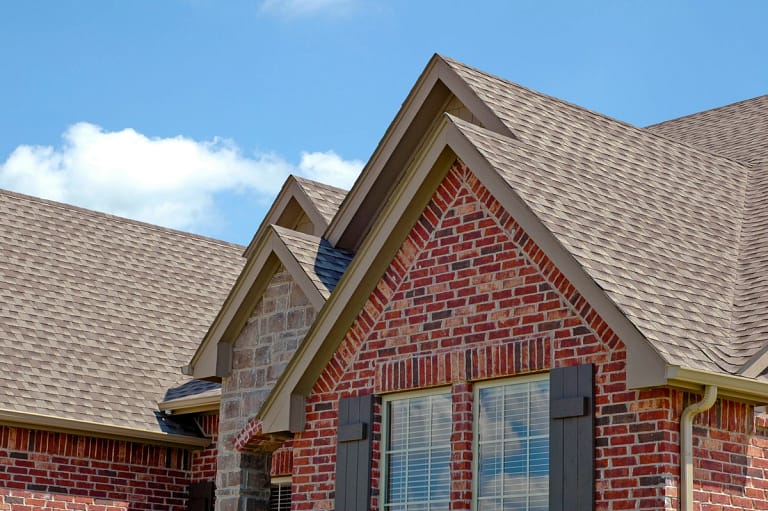When it comes to your home, few elements are as crucial as your roof. While many homeowners may take their roofs for granted, understanding the different layers of a roofing system and knowing how to identify signs of damage can save you from costly repairs in the long run. In this homeowner’s guide, we’ll delve into:
- The various roof layers
- Their functions
- Signs of roof damage
- When it’s time to contact a professional

Why Homeowners Need to Understand Their Roofing Systems
Your roof is more than just a protective shield; it’s a complex system with multiple layers working together to keep your home secure and comfortable. Having a basic understanding of your roofing system is essential for several reasons:
- Preventative Maintenance: Understanding your roof allows you to perform regular inspections and maintenance, catching issues before they become major problems. This can extend the lifespan of your roof and save you money in the long run.
- Identifying Damage: Recognizing signs of damage early on can prevent leaks, structural issues, and interior damage to your home. Quick action can mitigate the extent of the damage and reduce repair costs.
- Insurance Claims: In the unfortunate event of severe damage or a natural disaster, knowing your roofing system can help you navigate the insurance claims process more effectively.
- Energy Efficiency: Some roofing materials and insulation can impact the energy efficiency of your home. Understanding your roof can help you make informed choices about upgrades that could lower your energy bills.
Now, let’s explore the different layers of a roof and their functions.
The 5 Different Layers of a Roof
1) Decking (Sheathing)
The decking, also known as sheathing, is the foundation of your roof. It is usually made of plywood or oriented strand board (OSB) and is attached to the rafters. The decking provides the structural support for the roof.
2) Underlayment
Beneath the roofing material, there is a layer of underlayment. This is often a waterproof or water-resistant material that serves as an extra barrier against moisture. The most common types of underlayment include felt paper and synthetic materials like synthetic underlayment or ice and water shield.
3) Roofing Material
The roofing material is the visible, outermost layer of your roof, and it plays a significant role in protecting your home from the elements. Common roofing materials include asphalt shingles, metal roofing, wood shakes or shingles, clay or concrete tiles, and slate.
- Asphalt Shingles: These are the most popular roofing material in North America due to their affordability and durability. They come in various styles and colors.
- Metal Roofing: Metal roofs are known for their longevity and energy efficiency. They are highly resistant to fire and harsh weather conditions.
- Wood Shakes or Shingles: Wood roofing offers a natural, rustic look. However, they require more maintenance and are susceptible to fire and decay.
- Clay or Concrete Tiles: These roofing materials are known for their durability and resistance to extreme weather conditions. They come in a variety of styles and colors.
- Slate: Slate roofing is prized for its elegance and longevity. It can last for over a century but is also among the most expensive options.
4) Flashing
Flashing is a critical component of your roof that prevents water from seeping into vulnerable areas. It is typically made of metal and is installed around roof penetrations like chimneys, vents, and skylights, as well as in roof valleys where water runoff is concentrated.
5) Ventilation
Proper ventilation is essential for maintaining the health of your roof and your home. It helps regulate temperature and moisture levels in the attic, preventing issues like condensation and mold growth. Roof ventilation can be achieved through vents, soffits, and ridge vents.
Signs of Roof Damage
Now that you have a basic understanding of your roof’s layers, it’s essential to recognize signs of damage promptly. Here are some common indicators that your roof may need attention:
- Leakage: Water stains on your ceiling or walls, dripping water, or visible leaks in your attic are clear signs of roof damage.
- Missing or Damaged Shingles: Check for missing, cracked, or curling shingles, as these can expose your roof to further damage.
- Moss or Algae Growth: While moss and algae themselves may not damage your roof, they can trap moisture and accelerate wear and tear.
- Sagging or Deformed Roof: A sagging roof can indicate structural issues or water damage within your roofing system.
- Granule Loss: If you find an excessive amount of granules in your gutters, it could signal deteriorating shingles.
- Interior Damage: Water stains on your ceiling or walls, peeling paint, or bubbling wallpaper may indicate roof leaks.
When to Contact a Professional
While some minor maintenance tasks can be tackled by homeowners, significant roof repairs or replacements should be left to professionals. Here are some situations that warrant contacting a roofing expert:
- Severe Damage: If your roof has sustained significant damage from a storm, falling tree, or fire, it’s crucial to call a professional for a thorough assessment and repair.
- Multiple Leaks: When you have multiple leaks or extensive water damage, it’s a sign of a more significant issue that requires professional attention.
- Aging Roof: If your roof is approaching the end of its expected lifespan, it’s wise to have a professional inspect it for signs of deterioration and discuss potential replacement options.
- DIY Repairs Didn’t Work: If you attempted to fix a leak or other roofing issue yourself but the problem persists or worsens, it’s time to consult a professional.
- Safety Concerns: Roof work can be dangerous, especially for those without the proper training and equipment. If you’re not comfortable working at heights or don’t have the necessary safety gear, leave it to the experts.
A Roof System You Can Count On

Your roof is a multi-layered system designed to protect your home from the elements, and understanding its components and functions is crucial for homeowners. Regular inspections and prompt attention to signs of damage can extend the life of your roof and prevent costly repairs. When in doubt, always consult a professional roofing contractor to ensure the safety and integrity of your home’s roofing system.
If you’re ready to craft a residential roof that lasts for years to come, you need Best Exteriors. Contact us today to get started!




